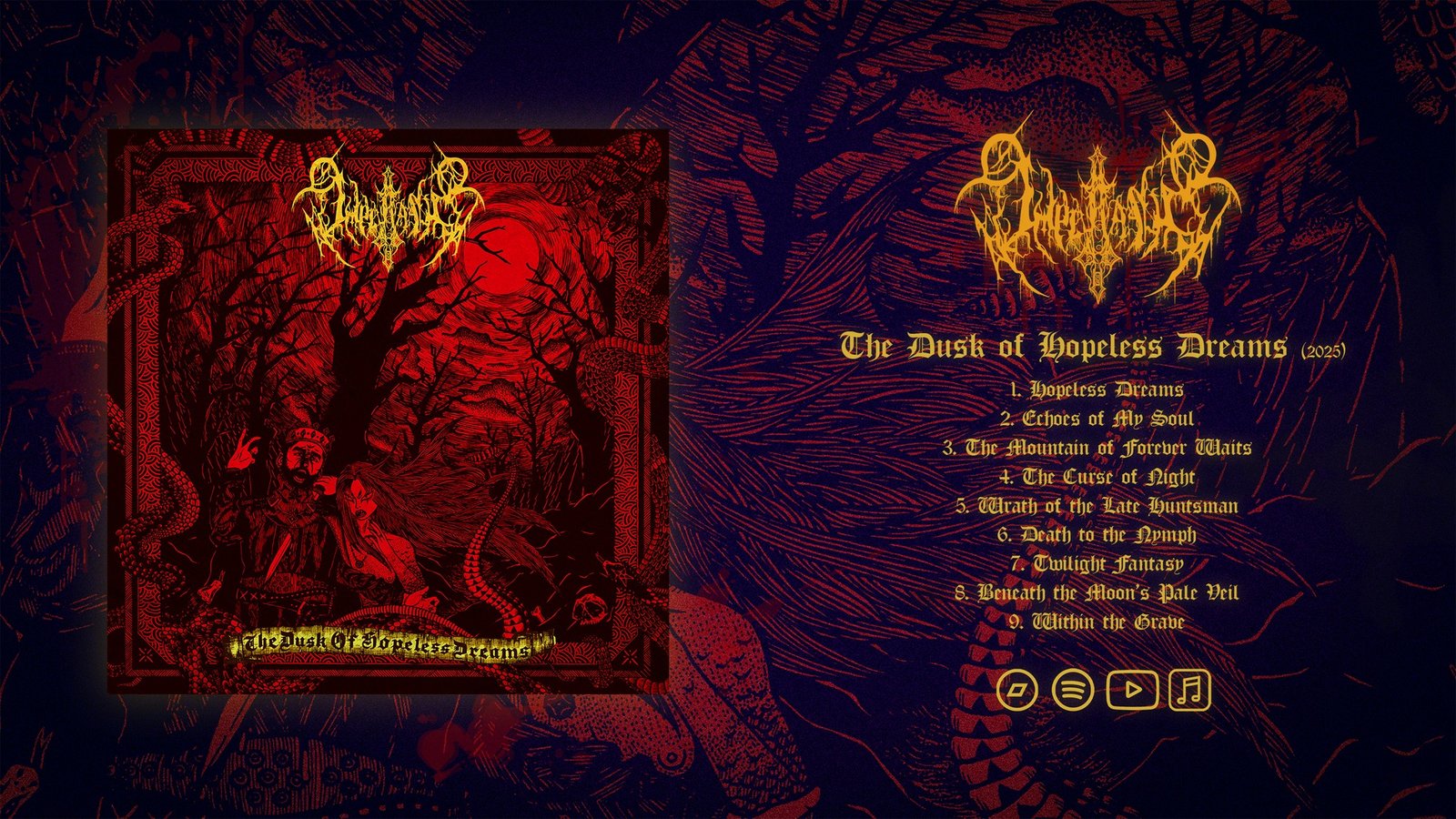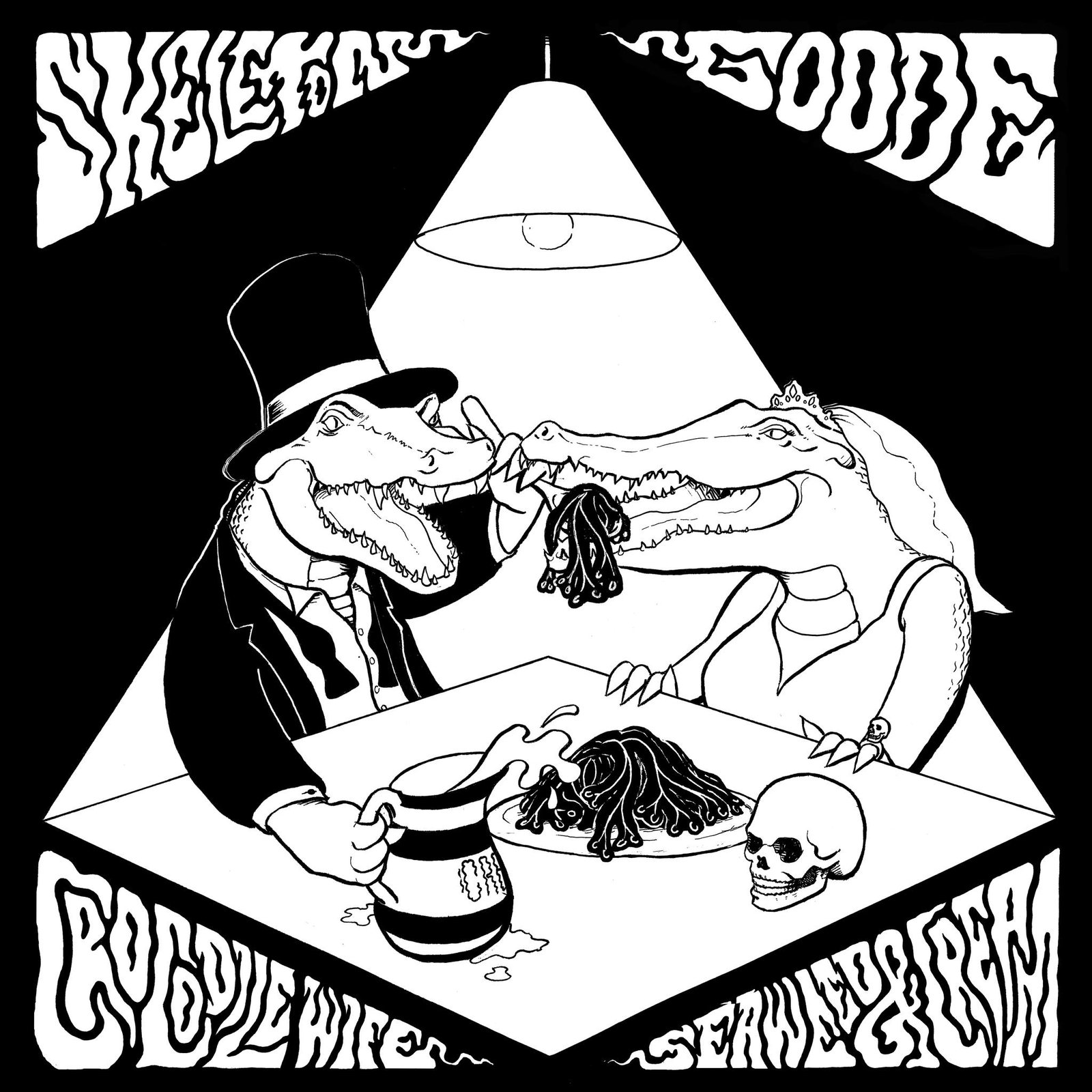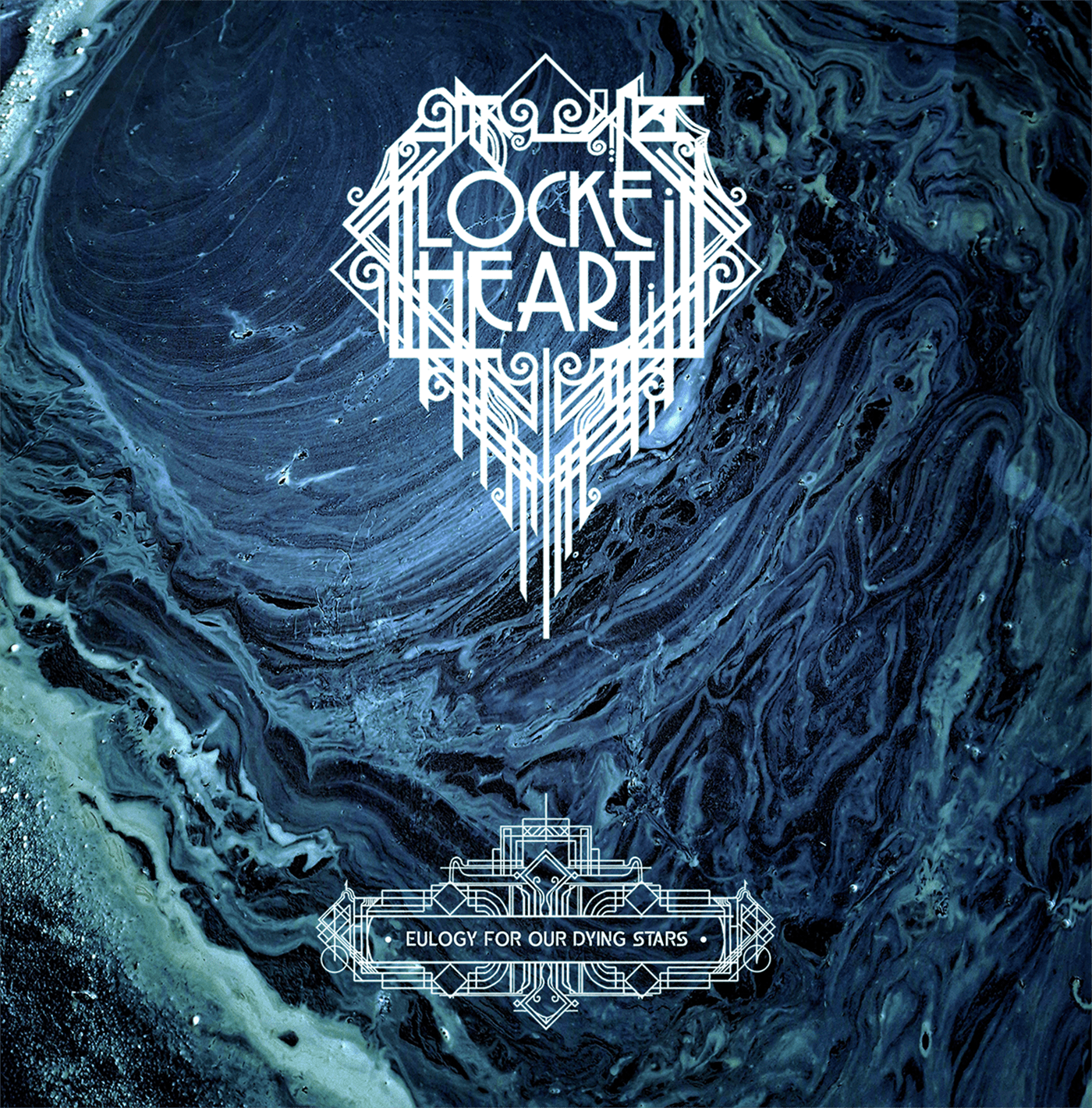Mới chỉ lâu thôi kể từ khi Imperatus ra mắt với “At the Mercy of the Wind“, nhưng bằng cách nào đó, chúng ta đã ở đây với “The Dusk of Hopeless Dreams, ra mắt chỉ một năm sau đó. Đối với một ban nhạc chỉ mới chính thức thành lập vào cuối năm 2023, sự thay đổi như vậy là rất hiếm.
Đối với những ai chưa biết, Imperatus là một ban nhạc death metal đen đến từ Hà Nội, được thành lập bởi Tan Dat "Nattsvärd" Nguyen, trước đây được biết đến với tác phẩm của anh ấy với Leukotomy, và một vài gương mặt quen thuộc khác trong cộng đồng metal của Hà Nội. Dòng dõi đó thể hiện trong DNA phong cách của ban nhạc—một phần bằng nhau của black metal giòn giã, riff death sôi động và sáng tác theo phong cách thrash. Bản phát hành này có cảm giác sắc nét, không tinh tế theo nghĩa bóng bẩy, mà có chủ đích hơn.
Vẫn Cực đoan, Với Kiểm soát Nhiều hơn
Về bản chất, “The Dusk of Hopeless Dreams” không đi quá xa khỏi thế giới của extreme metal, nhưng điều rõ ràng lần này là nắm bắt tốt hơn về nhịp độ và động lực. Ngay từ phần mở đầu, có một cảm giác mạnh mẽ về việc xây dựng tâm trạng: kỳ lạ và một sự căng thẳng thấp, bất an không dựa vào âm lượng hoặc tốc độ để tạo ra sự bất an.
Một trong những điểm nổi bật nhất của album này là việc sử dụng break một cách bất ngờ—thường được ẩn sâu trong một loạt các đoạn riff black metal được gảy bằng tremolo, rồi đột nhiên chuyển sang một giai điệu nghe có vẻ hardcore hoặc thrash hơn. Những đoạn này tạo nên sự tương phản và nhịp điệu thú vị cho những đoạn blast vốn dĩ không ngừng nghỉ. Chúng cũng không bị lạm dụng, tạo cảm giác xứng đáng khi xuất hiện.
Cũng có một lượng ảnh hưởng của Scandinavia đáng kể trong toàn bộ album, không chỉ ở tông màu đen, mà còn ở cách diễn đạt giai điệu và cách các đoạn riff đôi khi đan xen vào nhau thay vì chỉ phá vỡ. Đó là một điều nhỏ nhặt, nhưng nó giúp các bản nhạc có cảm giác được kết nối, thay vì chỉ là những đợt bùng nổ tốc độ hoặc hung hăng riêng lẻ.
Thô, Thực tế và Có thể liên hệ
Về mặt kỹ thuật, phần guitar thiên về cảm giác trung thực, được chơi hơn là chặt chẽ một cách phẫu thuật. Bạn có thể nghe thấy những người chơi đang thúc đẩy bản thân, đặc biệt là trong một số đoạn độc tấu lấy cảm hứng từ tân cổ điển rải rác trong album. Và đó là một điều tốt. Có sự quyến rũ trong sự thoải mái. Bạn có thể tưởng tượng những thứ này được truyền tải tốt khi biểu diễn trực tiếp, điều này không thể nói đối với nhiều bản thu âm metal hiện đại được làm mượt đến mức trở nên giống như người máy.
Một số đoạn solo nghe như gợi nhớ đến dòng nhạc death metal du dương cuối thập niên 90—có thể là Children of Bodom, có thể là đầu Kalmah. Bài hát có chút gì đó tinh tế, dù không phải lúc nào cũng hoàn hảo.
Về mặt sản xuất, cần lưu ý rằng tay guitar/ca sĩ Tấn Đạt "Nattsvärd" Nguyễn đã tự mình đảm nhiệm phần phối khí và kỹ thuật. So với một sản phẩm tự làm, album nghe khá ổn. Tiếng guitar chắc nịch, tiếng trống sắc bén, và không có gì quá chìm nghỉm hay lạc lõng. Album không hoàn hảo như phòng thu, nhưng đó cũng là một phần sức hấp dẫn. Có thể thấy ban nhạc muốn giữ lại một số chi tiết thô ráp.
Bass là một trong số ít điểm mà bản phối cần được thể hiện rõ nét hơn. Trong phần lớn album, nó đã làm tốt nhiệm vụ của mình, hỗ trợ các đoạn riff và tạo ra một chút âm trầm, nhưng có những khoảnh khắc - như đoạn intro của "Death to the Nymph" - nó thực sự tiến lên phía trước và tạo ra cảm giác sợ hãi và không gian thực sự.
Bản nhạc đó đặc biệt được hưởng lợi từ phần mở đầu kỳ lạ hơn, chậm rãi hơn, trước khi chuyển sang một giai điệu quen thuộc hơn. Sẽ thật tuyệt nếu thấy ban nhạc khai thác thêm không gian đó trong các tác phẩm tương lai, đặc biệt nếu điều đó giúp cho âm trầm có thêm không gian để thở. Khi bạn nghe rõ, nó sẽ tăng thêm sức nặng mà những đoạn nhanh hơn đôi khi thiếu.
Về giọng hát, Nattsvärd mang đến một màn trình diễn trong trẻo hơn hầu hết các giọng hát black metal khác, và điều này cuối cùng lại trở thành một điểm mạnh. Không hề có nỗ lực nào để át tiếng vang hay bóp méo giọng hát nhằm tạo nên bầu không khí; thay vào đó, giọng hát được giữ nguyên vẹn trong bản phối và nổi bật mà không hề lấn át.
Phạm vi của anh ấy chủ yếu nằm trong khoảng trung bình đến cao, nhưng có đủ sự thay đổi để không trở nên đơn điệu. Bạn thậm chí có thể theo dõi một phần lớn lời bài hát. Giọng hát có cảm giác như họ đang tham gia vào quá trình sáng tác chứ không chỉ là lớp phủ lên trên.
Chuyển đổi chặt chẽ và động lượng tự nhiên
Một điểm mà "The Dusk of Hopeless Dreams" xử lý tốt là nhịp độ giữa các phân đoạn. Hiếm khi có khoảnh khắc nào mà sự chuyển tiếp trở nên gượng gạo hay gượng ép. Dù là chuyển từ những giai điệu dồn dập sang những giai điệu dồn dập hay trở lại với cái chết đen kịt tốc độ cao, các đoạn chuyển tiếp đều mượt mà và tự tin.
Nhìn chung, album có nhịp độ nhanh (hơn 40 phút một chút), điều này rất có lợi. Nó không bao giờ kéo dài quá mức, và bạn có thể cảm nhận được ban nhạc đã cắt giảm những phần thừa thãi thay vì nhồi nhét những đoạn nhạc đệm chỉ để đạt được nhịp độ tùy ý. Tuy nhiên, một chút đa dạng hơn về nhịp độ hoặc cường độ có thể đã giúp một số bài hát có thêm bản sắc riêng.
Nhìn vào album này trong bối cảnh thời gian hoạt động ngắn ngủi của ban nhạc, thật khó để không ngưỡng mộ sự nỗ lực không ngừng nghỉ. Việc phát hành hai album dài trong vòng chưa đầy hai năm không chỉ ấn tượng mà còn gần như chưa từng có trong giới âm nhạc địa phương. Có động lực và mục đích đằng sau những gì Imperatus đang làm, và "The Dusk of Hopeless Dreams" là một minh chứng rõ nét cho đà phát triển đó.
Nhưng không phải là không có những góc cạnh thô ráp. Điều đó nói rằng, ban nhạc rõ ràng đang tạo ra bản sắc riêng của mình, và những cải tiến từ bản đầu tay đã thấy rõ. Nếu họ tiếp tục theo quỹ đạo này trong khi cho mình không gian để thở và thử nghiệm, bản phát hành tiếp theo có thể là một bước tiến thực sự thú vị.
Nếu bạn thích chất metal mộc mạc nhưng có mục đích, dựa trên truyền thống black metal Scandinavia với chút gì đó tự phát và một chút thrash muscle, Imperatus rất đáng để thử. Họ không cố gắng gây ấn tượng với thuật toán. Họ chỉ muốn bùng nổ. Và đôi khi, đó chính là tất cả những gì bạn thực sự cần.
Đánh giá: 7.5/10




